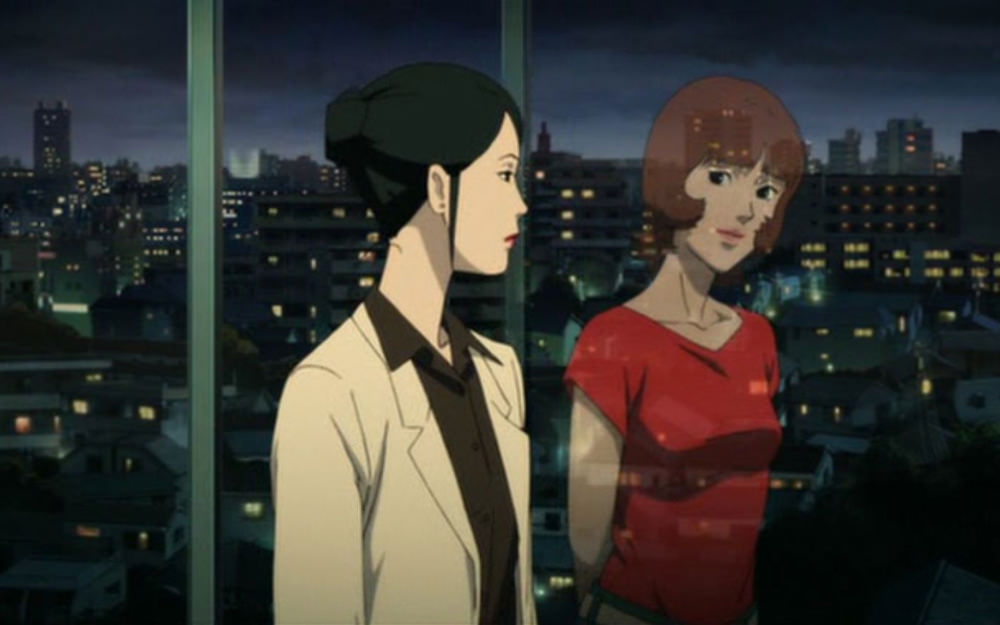Herself or Her Self?: Visual Design and Mirrors in Cléo from 5 to 7
By physically framing Cléo in mirrors placed deliberately throughout the film, Varda engineers the audience’s perspective so that it is Cléo’s. She uses the visual symbolism of a mirror to indicate the way in which Cléo sees herself – that is, through a patriarchal gaze which gradually deteriorates.
Flee and the Reconstruction of Memory
The memory here is what ostensibly constitutes the truth. The labor of this remembering, of shedding a falsehood and laying bare the recollection of his youth, is what is at the core of this film. However, what makes Flee so compelling is not its relationship to truth, but its depiction of that labor requisite in transitioning between narrative and memory.
Cinematic Dreams: Wish Fulfillment and Visual Pleasure in Paprika
The malleability of animation adds to the power of film to create narratives and fulfill fantasies, having no boundaries as to what one can depict, just like in a dream. It is this quality that allows for the especially blurred boundaries between dream and reality in Paprika, because we move from one un-reality to another un-reality, stuck in an almost never-ending realm of wish fulfillment.
Lost in Translation (2003): The Incompatibility of Zen and Solipsism
Solipsism ultimately emphasizes an individuality contrary to Zen teachings as expressed through the film’s cinematography and attitude of condescension towards Japan’s locals. The ultimate answer to the film’s riddle is only partially a Zen acceptance of reality and, more discernible, a desire to transcend one’s surroundings through embracing individualism.
Double Indemnity: A Genre Common Ancestor
Audiences were ready for adult contemporary storytelling. While the effect of life during World War II was certainly an integral component for this desire, the film also held the same basic human appeal that the lurid tabloids provided. [Double Indemnity] was sexy, sensational, and showed that a good murder tale is always one that can be recycled and still possess the power to captivate the audience.
In Defense of the Sprawl: An Ode to Long-Running TV Shows
Both Community and Buffy find themselves reckoning with what happens when stories outlive their natural ending. These shows are faced with an existential question: how do we go on now?
Superheroes, Sexuality, and the Status Quo: Batman’s Ideological Function in American Cinema
This paper intends to explore the evolving mythology of Batman and how the malleability and, paradoxically, the inflexibility of his ideological function highlights the indispensability of superhero narratives within the American cultural ideological state apparatus. [...We] will examine Batman’s ideological influence on the American consciousness, ultimately exposing the hypocrisy of the superhero trope’s progressiveness within American cinema.
Do Executives Dream of Electric Films?: Hollywood deals with an Identity Crisis
In essence, while streaming platforms offer a broader canvas for filmmakers to showcase their stories, they also bring complexities related to media exposition and saturation that require careful consideration. The challenge lies in balancing the democratization of cinema with addressing the potential downsides of overproduction and its impact on emerging talent and the industry's long-term health.
The World is a Savage Garden: Interview with the Vampire Reflects Our Age’s Broken Heart
This generation is both provoked to rebel against the system and numbed by its helplessness; the TV series’ Louis is a manifestation of that woe. His rage and repression are invisible, but the trail of bodies he leaves behind as a vampire renders them visible.
Charlie Chaplin’s The Great Dictator as Propaganda
Though when scrutinizing [The Great Dictator] through cinematic standards, the critics may have been wholly correct, the purpose of this essay is to reveal that reviewers were ill-considered to apply a cinematic shape to Chaplin’s film. Moreover, it will argue that Chaplin never intended for [The Great Dictator] to take the shape of cinema at all in favor of another form entirely: one of propaganda.
A Look in the Mirror: Ruben Östlund’s Triangle of Sadness
In essence, one becomes a monster by becoming part of a cultural group; it is not an individual themselves that is a monster but rather the group they find themselves a part of. The phenomenon is perfectly illustrated in the manner Ruben Östlund’s Best Picture Nominee Triangle of Sadness addresses social currency, arguing that amassing a wealth of social currency will inevitably corrupt an individual.
From “Sigh Guys” to Psychos: The Postwar Crisis of Masculinity in Hollywood
Throughout the 1950s, not even the manliest of men in Hollywood were able to escape the postwar crisis of masculinity and the evolving ideas of what it meant to be a man. This shift was reflected most evidently in cinema, as filmmakers recognized increasing anxieties regarding identity, sexuality, and particularly masculinity.
A Contextual Analysis of Kurosawa’s High and Low
It is almost certain that the average viewer of High and Low will easily recognize its brilliance. However, the viewer who is aware of these cultural influences can access entirely new dimensions of meaning that are present in the film. Historical context is enough to dramatically change the viewing experience not just of High and Low, but of any movie with a long-lasting impact, and that fact alone makes it worth studying.














